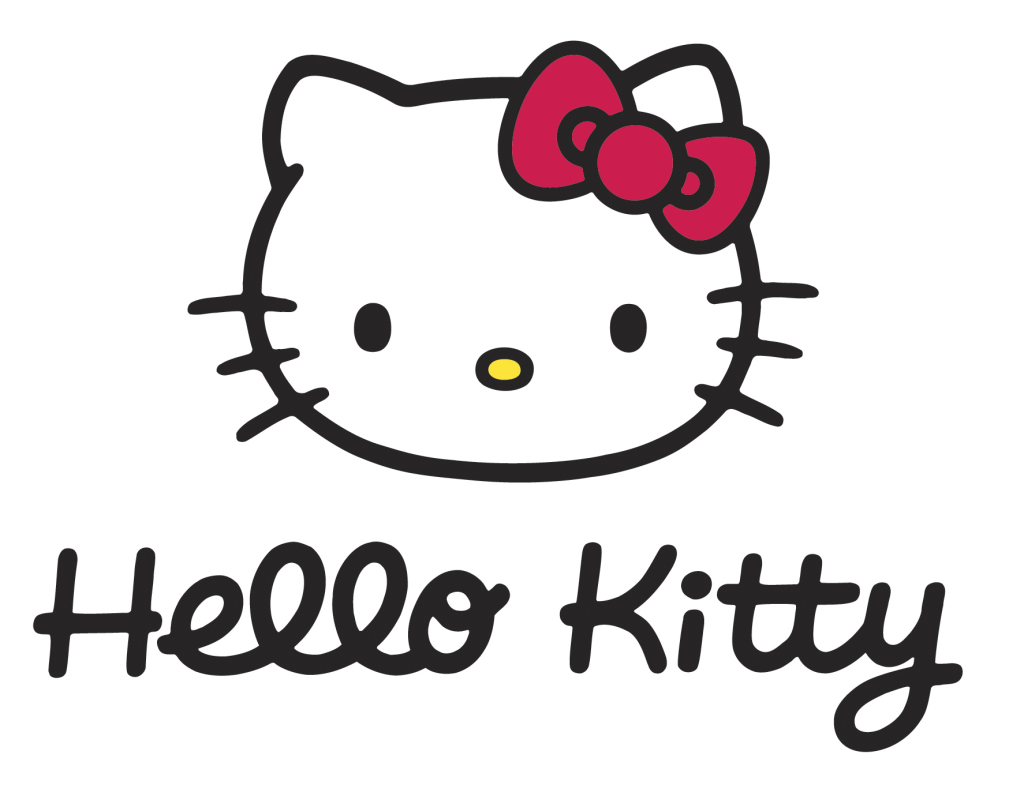“Happiness comes in all colours of the rainbow!” – Hello Kitty
- Hello Kitty is a licensed, cartoon-style character created as an icon and promotional device for Sanrio, a Japan-based company, and it has become the biggest seller for the company, as well as having been one of the top grossing characters in Japan.
- ‘Hello Kitty’ is known as ‘Harōkiti’ in Japanese-rōmaji and her complete name is ‘Kitty White’ or ‘Kiti Howaito’ in rōmaji; her birthday is the 1st of November; and she is known as a ‘symbol of friendship’.
- Hello Kitty has the appearance of a clothed, upright, white, Japanese bobtail cat with a red or pink bow on the left ear and human personality traits, and she is as tall as 5 apples and weighs as much as 3 apples.
- Hello Kitty is described as a kind and happy British girl from London, that loves to bake, make new friends, listen to music, travel and read, and she has a twin sister named ‘Mimmy’, a pet hamster named ‘Sugar’, and a pet cat named ‘Charmmy Kitty’.
- Hello Kitty was originally designed by Japanese designer, Yuko Shimizu, for Sanrio in 1974, due to the company noticing that cute designs increase sales, while the second designer was Setsuko Yonekubo, and the third designer was Yuko Yamaguchi.
Hello Kitty
Image courtesy of Sanrio
- Hello Kitty’s image was first sold on a purse in 1974, increasing company profits significantly, and appearing in the United States in 1976, although by the late 1970s she had lost popularity.
- Hello Kitty does not have a mouth, which means she can portray a variety of emotions, and consumers can relate differently to her, depending on their mood.
- Hello Kitty overcame her significant slump in the late 1970s after Yuko Yamaguchi, her third designer, took over, as she created a story for her, and improved the appearance and style of the character.
- Hello Kitty was originally designed for young girls, although this market was enlarged to encompass teens and adults by the 1990s, and in 2008, Hello Kitty was featured on 50,000 products, and was worth $7 billion on the icon’s 40th anniversary in 2014.
- Hello Kitty has been depicted on products ranging from clothing, personal items, credit cards, cafes, household items and transport, and she has been featured in video games and a number of television series, as well as a music album.
Bibliography:
Hello Kitty, 2014, Wikipedia, http://en.wikipedia.org/wiki/Hello_Kitty
Hello Kitty, My Melody, Badtz-Maru and other Sanrio characters at SanrioTown.com, 2011, Sanriotown, http://hello-kitty.sanriotown.com/
Interview: Third Hello Kitty Designer Yuko Yamaguchi, 2014, Tokyo Otaku Mode, http://otakumode.com/news/53856f4a935d07d66400069c/







That’s pretty crazy – who knew a cute design would go so viral?!